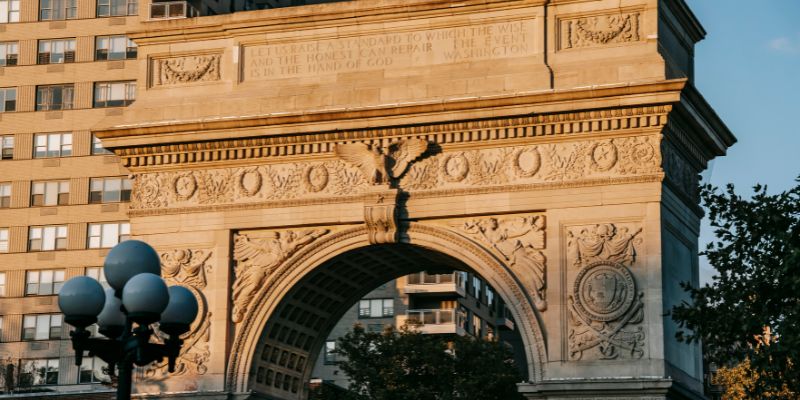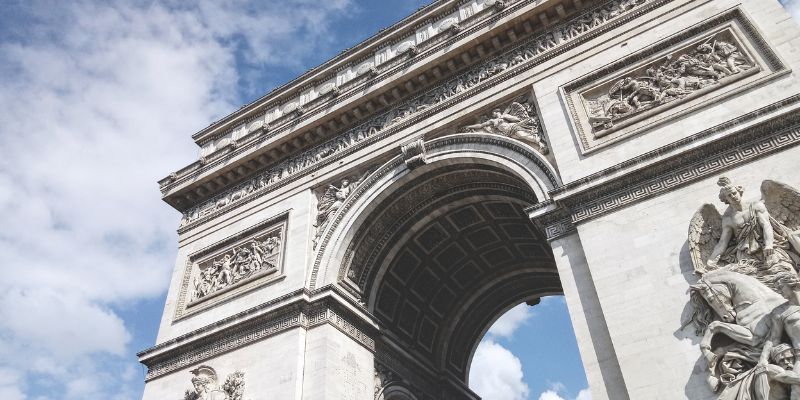The custom of erecting a triumphal arch dates back to the Roman Republic. Generals who led their armies to victory were honored with the construction of triumphal arches. A triumph, a festive parade passing beneath the arch, was sometimes awarded to the generals after the arches were built.
During Imperial Rome, triumphal arches were only used to commemorate the emperor's achievements. The latter arches were adorned with exquisite sculptures that chronicled the emperor's military victories and other achievements. Nearly forty Roman arches may be seen in various states of preservation around the old empire.
The contemporary interpretation of the monument was heavily influenced by the Roman arches dedicated to Emperors Titus, Septimius Severus and his sons, and Constantine, even though these do not adequately depict the entire range of ancient forms and uses of the structure. Temporary arches have decorated political processions in Europe's main renaissances since antiquity, while more permanent monuments have celebrated imperial military successes.

The Top 7 Monumental Triumphal Arches
The Arch of Titus
The Arch of Titus, which still stands at the entrance to the Roman Forum, was built after the emperor's tragic death in 81 AD. Domitian, Titus' brother, and successor, dedicated the structure, the circus under Piazza Navona, and the imperial palace atop Palatine Hill to the Roman people.
The inscription on the front of the monument indicates that Titus had already passed away by the time it was dedicated. Since emperors could only be called gods after they had passed on, the fact that it mentions a godlike Titus reveals its true nature.
The tale of the building of the Colosseum is depicted in reliefs within the Arch of Titus. After a long conflict, the Roman Emperor Titus took Jerusalem in 70 AD. Following their successful assault, the Romans plundered the city and carted off the temple's valuables as booty.
Arch of Constantine
A successful leader amid a time of Roman decline, Constantine (also known as "Constantine the Great") is remembered today as the emperor of the Roman Empire. Constantine's conversion to Christianity after a decisive triumph over a competitor is why he is remembered today.
The Colosseum in Rome is now adjacent to the Arch of Constantine. The intricate carvings that decorate the arch show various images from battles and Emperor Constantine. Rome's capital has various memorial structures, including the Arch of Constantine and other Triumphal Arches.
Arc de Triomphe de l'Étoile
Paris, France, is home to one of the world's most well-known arches. The world's biggest triumphal arch, the Arc de Triomphe de l'Étoile, was commissioned by Napoléon I to celebrate his military victories and pay tribute to his unbeatable Grande Armee.
This replica of the ancient Roman Arch of Constantine, designed by architect Jean François, is twice as big as the original. The monument, known as the L'Avenues de Paris, was built between 1806 and 1836 on Place de l'Étoile, and it serves as the center point from which the city's famed star.
When Napoléon lost, construction halted, but in 1833, King Louis-Philippe I resumed his efforts and dedicated the arch to the courage of the French military forces. The arch was finished by Guillaume Abel Blouet, who is listed as the architect on the monument itself, using Chalgrin's blueprints.
Washington Square Arch
The American Revolution's Continental Army commander, George Washington, is regarded as the country's first national hero. Of course, he also served as the nation's first head of state.
The historic Greenwich Village arch stands as a symbol of freedom and autonomy. This neoclassical icon, created by American architect Stanford White, stands in Washington Square Park instead of a wooden arch erected in 1889 for the centenary of Washington's inauguration.
Arch of Drusus
Drusus, a rising star during the Augustan Age (31 BC - 14 AD), was one of the most accomplished military leaders of the early Roman Empire. In successful operations against several Germanic tribes, he became the first Roman general to cross the Rhine into Germany with an army.
These included victories against the Sicambri, Frisii, Batavi, and Macromanni. Then, in 9 BC, he was riding his horse when he collapsed and died. Even though Drusus was memorialized in books and paintings, this structure had nothing to do with the man.
Archaeologists have determined that the so-called 'Arch of Drusus' was built in the early third century AD to transport water from the Aqua Antoniana, one of the Roman aqueducts, to the Baths of Caracalla. Only the middle opening of the arch's three original ones remains. If the remaining section is any indication, the entire monument was constructed out of travertine and covered with marble.
Arch of Trajan - Ancona
One of Italy's most spectacular Triumphal Arches may be seen at Ancona, situated on the Adriatic Coast of the Italian Peninsula. White marble covers every surface of the Arch of Trajan, completed in 115 CE.
Four columns with Corinthian capitals decorate the facade, a design element common to Roman triumphal arches. However, this specific arch stands out due to the presence of a stairway leading up to the monument. The arch was constructed next to the water to be visible to passing ships.
The Arch of Septimius Severus
The emperor built the Arch of Septimius Severus, one of Rome's most recognizable landmarks, after he died in 203 CE. The arch was built to honor the Romans' victories against the Parthians. The Parthians were a competing empire that held sway over much of present-day Iran.
The Arch of Septimius Severus is well-known because of its prestigious position in the Roman Forum. It is possible to make out the coffered ceilings within the archways despite the stone being severely eroded.

Conclusion:
More than two thousand years have passed since the first triumphal arch was built in the Roman Empire. These standalone gateways have a variety of purposes; therefore, they are more properly referred to as arch monuments, memorial arches, or honorific arches.
It is unknown when the first triumphal arches were constructed, but they quickly gained popularity. There are now a plethora of stunning arches that are well-known all over the globe. We listed some of the world's most impressive Triumphal arches.





